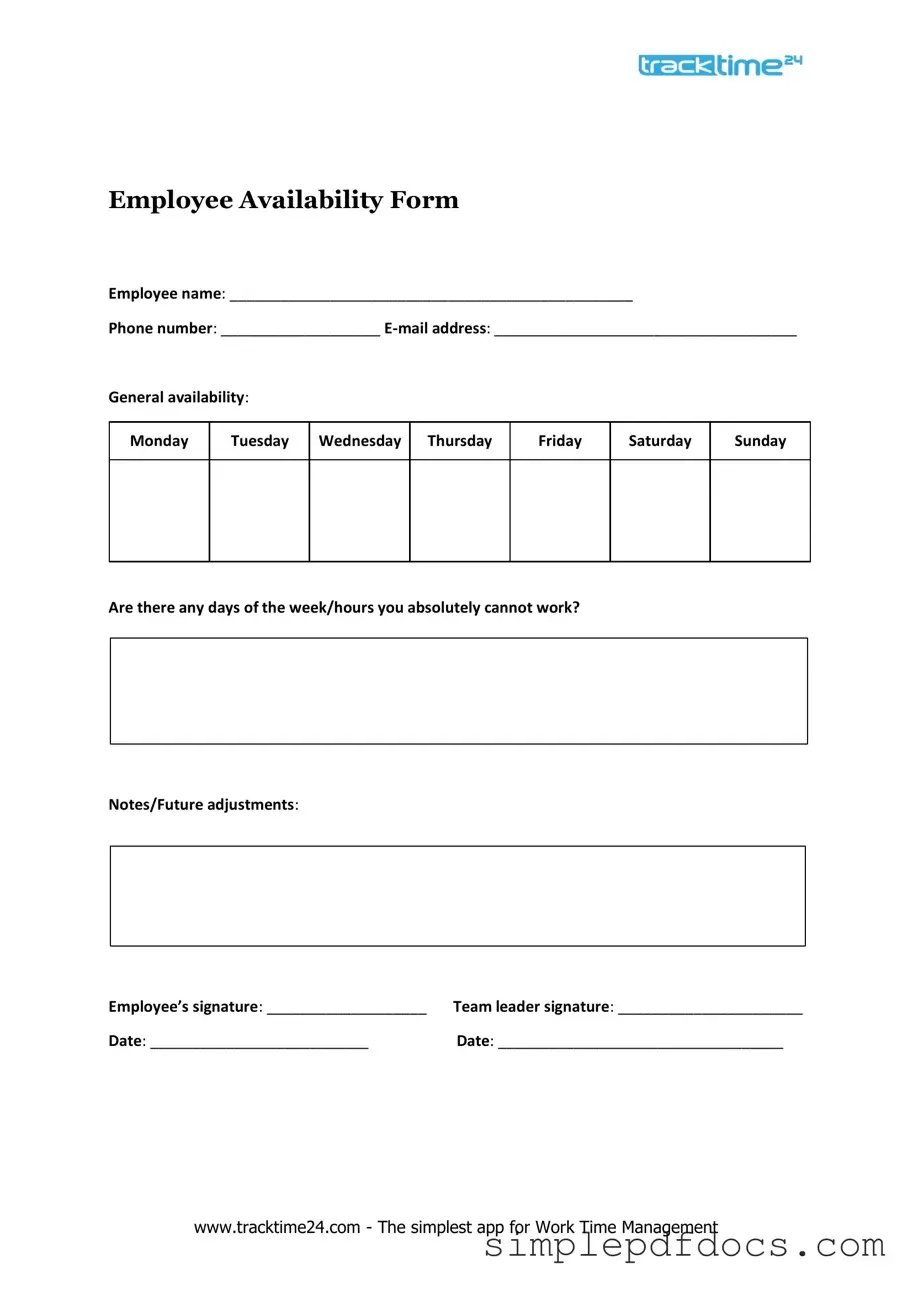When managing a workforce, understanding employee availability is crucial for effective scheduling and ensuring operational efficiency. The Employee Availability form serves as a vital tool for employers and employees alike, allowing for clear communication regarding when team members are available to work. This form typically includes essential details such as the days and times an employee is available, any recurring commitments that might affect their schedule, and preferences for shifts. By providing this information, employees can express their availability while employers can plan shifts more effectively, accommodating both business needs and personal circumstances. Additionally, the form can help identify any potential conflicts in scheduling, fostering a more harmonious workplace environment. Ultimately, the Employee Availability form not only streamlines the scheduling process but also promotes a culture of respect and understanding between employers and their staff.
